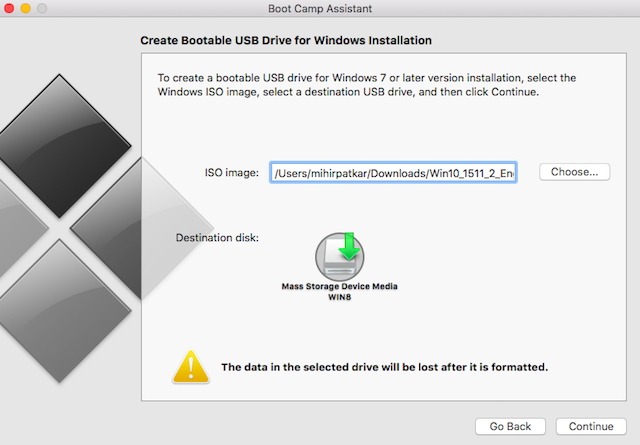

- #How to recover mac bootable disk windows install#
- #How to recover mac bootable disk windows update#
- #How to recover mac bootable disk windows license#
- #How to recover mac bootable disk windows download#
Note: As I explained in our main Mavericks-installation article, if you leave the Mavericks installer in its default location in the Applications folder when you install OS X 10.9, the installer will be deleted automatically after the installation finishes.
#How to recover mac bootable disk windows download#
(The version listed in the Mac App Store’s Information box is the version of OS X you’ll get if you download the latest installer.) If the Mac App Store date is newer than the Modified date on your copy of the installer, you need to redownload the installer to get the latest version. Then locate your downloaded copy of the Mavericks installer in the Finder, choose File -> Get Info, and look at the date next to Modified. How do you know if you have the newest version of the Mavericks installer? The easiest approach is to look at the Information box on the Mavericks page on the Mac App Store-specifically, check the date next to Updated (or Released, as the case may be immediately after the initial release). The Mac App Store displays details about the current version of the Mavericks installer. So if you create an install drive and later download an updated version of the Mavericks installer, you’ll want to erase that install drive and recreate it using the new installer. Similarly, any bootable Mavericks install drive you create will not be updated to the latest installer version automatically. (If the Mac App Store won’t let you redownload the installer, quit the Mac App Store app, relaunch it, and then Option+click the Purchases tab in the toolbar that should show the Download button next to Mavericks in the Purchases list.) If you’ve got an older version of the installer and you want the latest version, you must delete your current copy of the installer and then redownload the Mavericks installer from the Mac App Store.
#How to recover mac bootable disk windows update#
However, unlike with other Mac App Store-purchased software, the Mac App Store does not update the copy of the Mavericks installer app sitting on your hard drive. Obviously, then, you want to create your bootable install drive using the latest version of the Mavericks installer.

Using the latest installer for your bootable install drive is convenient, because it means that if you ever need to reinstall Mavericks, you won’t have to install 10.9.0 and then immediately install the latest big update. For example, when the inevitable 10.9.1 update is released, a few days later the Mac App Store will begin providing an updated Mavericks installer that installs 10.9.1 right off the bat.

However, Apple regularly updates the OS X installers it makes available for download from the Mac App Store. A bootable install drive you create from that installer will install OS X 10.9.0. For example, if you downloaded OS X 10.9 on the day Mavericks was released, you downloaded the 10.9. What? You didn’t even realize that there are different versions of the installer? It turns out that when you download an OS X installer from the Mac App Store, that copy of the installer contains whatever version of OS X was available at the time of download. Get the latest version of the Mavericks installerīefore you make a bootable install drive, you should make sure you have the latest version of the Mavericks installer.
#How to recover mac bootable disk windows license#
Also, if you need to reinstall Mavericks, recovery mode requires you to download the entire 5.3GB installer again.) Finally, if you need to install Mavericks over Leopard-assuming you have the license to do so-a bootable install drive makes that process easier. (The OS X Recovery feature is a big help here, but not all Macs have it-and if your Mac’s drive is itself having trouble, recovery mode may not even be available. Also, if your Mac is experiencing problems, a bootable install drive makes a handy emergency disk. But there are a good number of reasons you might want a bootable Mavericks installer on an external hard drive or a thumb drive (USB stick).įor example, if you want to install Mavericks on multiple Macs, using a bootable install drive can be more convenient than downloading or copying the entire installer to each computer. Instead, it’s available only as an installer app downloadable from the Mac App Store, and that installer doesn’t require a bootable installation disc. Mavericks (OS X 10.9) doesn’t ship on a disc.


 0 kommentar(er)
0 kommentar(er)
